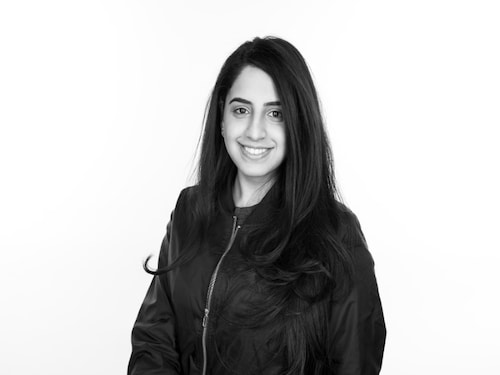Accessible data visualisation for those with visual impairment
Sukriti Chadha feels mobile accessibility continues to be one of the least comprehended and conversed parts of the product development lifecycle


From a very young age, her parents, extended family and soon teachers observed that had a brilliant acumen, equally matched by her heartfelt passion for life, knowledge, and servant leadership. She excelled in academics through high school in her native Delhi, India, which further unleashed opportunities and a delightful path of higher learning for Sukriti. There were already many signs that she was destined for making an impact on a global scale.
As an engineer by training and a product manager by profession, given how much human lives are woven around technology, the 2015-Princeton graduate’s interest in the interplay of mobile web, native apps, hybrid apps and wearables is perhaps self-evident. However, life challenged her to dive deeper, and explore avenues for “some of the most creative problem-solvers who must constantly navigate a world that wasn’t built with them in mind — persons with disabilities”.
Until half-a-decade ago, Sukriti was living a life no different from that of many her age. In 2015, her father was diagnosed with Diabetic Retinopathy, causing him to lose complete vision in his right eye. But Sukriti took it head-on, and decided to view the world with a new lens — explore what the world looks like for people with visual impairment, and later for other forms of disabilities.
Her father’s impairment underscored how critical a role technology plays in human lives, and the even more pressing need to create an inclusive society.“Historically, accessible technology has inspired some of the most ground-breaking solutions such as transistors that led to better everyday products for everyone. The importance of making mobile products accessible is even more important in India, given that most people access the web only on their phones,” Sukriti shares.
1 in 5 people in the world live with some form of disability. As we transition towards online interactions between people, communities and businesses, it is imperative to reckon the requirement of people who need assistive technology. “Even from a technical standpoint, accessibility challenges are some of the most illuminating and rewarding problems I have worked on” — the 28 year-old said.
Having completed Electrical Engineering and Finance at Princeton, Sukriti joined Yahoo Finance for hands-on experience as an Android developer. In the absence of a product manager, she ended up helping with product work in addition to coding partly by necessity, and partly because of her curious nature for “prioritization and user experience,” she adds.
The struggle people with disabilities still face disturbed Sukriti, and kept her on the edge to devise accessible cross-platform products and nearly a dozen honours and peer review experiences in the accessibility sector.
The initiative she is most proud of during her time at Yahoo Finance, is building charts accessible to users with visual impairment, using a combination of music, speech and haptics. Credited for two patents for accessible data visualization techniques, Sukriti led a cross functional team that built “Audio Charts” which turn data points into tones, speech synthesis and haptic feedback. With a bias towards innovation, the team open-sourced (anyone can adopt the solution) their solution and made it available via SDK (Software Development Kit) for all developers. It remains a popular and helpful solution worldwide to this day and was recently accepted to the CSUN Assistive Technology Conference, the largest annual accessibility conference.
Building mobile apps is easier than ever, Sukriti remarks. However, she feels mobile accessibility continues to be one of the least comprehended and conversed parts of the product development lifecycle. “As more developers, designers and product managers become familiar with integrating accessibility in their workflows, we’ll see improved experiences for everyone and shared tools similar to the ones we have for web” a hopeful Sukriti says.
After her stint at Yahoo, she joined Spotify at the beginning of August this year. With accessibility as the precept driving her, one of the projects she embarked on was integrating accessibility testing workflows for mobile into Backstage, Spotify’s open source developer portal.
“The work I do with accessibility standards at W3C is globally relevant since the guidelines are followed by most large technology companies and impacts the industry as a whole.” shares the recreational pilot and yoga instructor who has also been a panelist and member at numerous international tech fora, including the judging panel for CES (Consumer Electronics Show) Innovation Awards.
“It is more urgent than ever to build digital and physical environments where people, regardless of ability can fully participate and express themselves.”
“Accessibility is a celebration of diversity, and the spirit of it rings especially true in India, where we pride ourselves on our diverse, but united spirit.” Sukriti signs off.
Disclaimer: The views, suggestions and opinions expressed here are the sole responsibility of the experts. No Forbes India journalist was involved in the writing and production of this article.
First Published: Nov 23, 2020, 11:33
Subscribe Now
